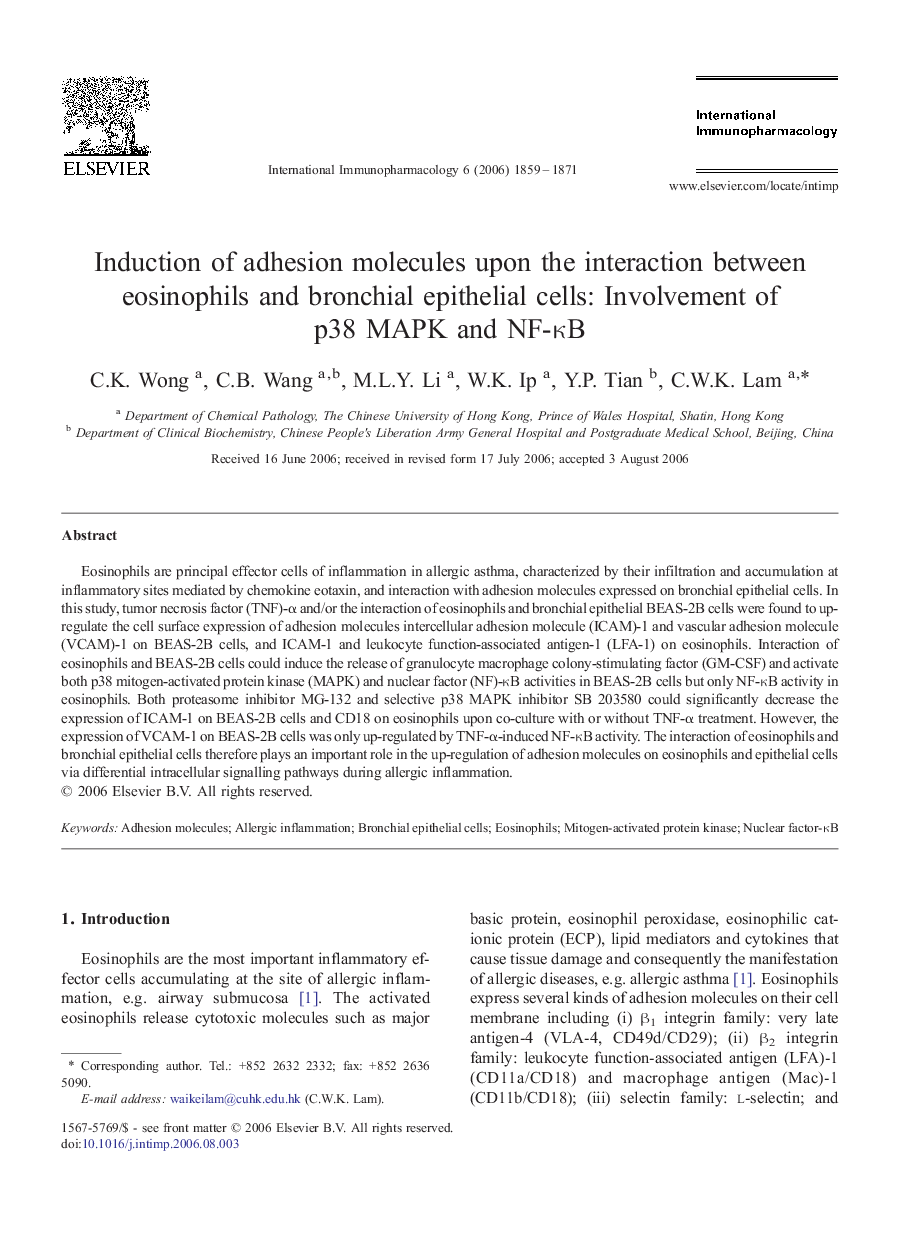| Article ID | Journal | Published Year | Pages | File Type |
|---|---|---|---|---|
| 2541826 | International Immunopharmacology | 2006 | 13 Pages |
Eosinophils are principal effector cells of inflammation in allergic asthma, characterized by their infiltration and accumulation at inflammatory sites mediated by chemokine eotaxin, and interaction with adhesion molecules expressed on bronchial epithelial cells. In this study, tumor necrosis factor (TNF)-α and/or the interaction of eosinophils and bronchial epithelial BEAS-2B cells were found to up-regulate the cell surface expression of adhesion molecules intercellular adhesion molecule (ICAM)-1 and vascular adhesion molecule (VCAM)-1 on BEAS-2B cells, and ICAM-1 and leukocyte function-associated antigen-1 (LFA-1) on eosinophils. Interaction of eosinophils and BEAS-2B cells could induce the release of granulocyte macrophage colony-stimulating factor (GM-CSF) and activate both p38 mitogen-activated protein kinase (MAPK) and nuclear factor (NF)-κB activities in BEAS-2B cells but only NF-κB activity in eosinophils. Both proteasome inhibitor MG-132 and selective p38 MAPK inhibitor SB 203580 could significantly decrease the expression of ICAM-1 on BEAS-2B cells and CD18 on eosinophils upon co-culture with or without TNF-α treatment. However, the expression of VCAM-1 on BEAS-2B cells was only up-regulated by TNF-α-induced NF-κB activity. The interaction of eosinophils and bronchial epithelial cells therefore plays an important role in the up-regulation of adhesion molecules on eosinophils and epithelial cells via differential intracellular signalling pathways during allergic inflammation.
